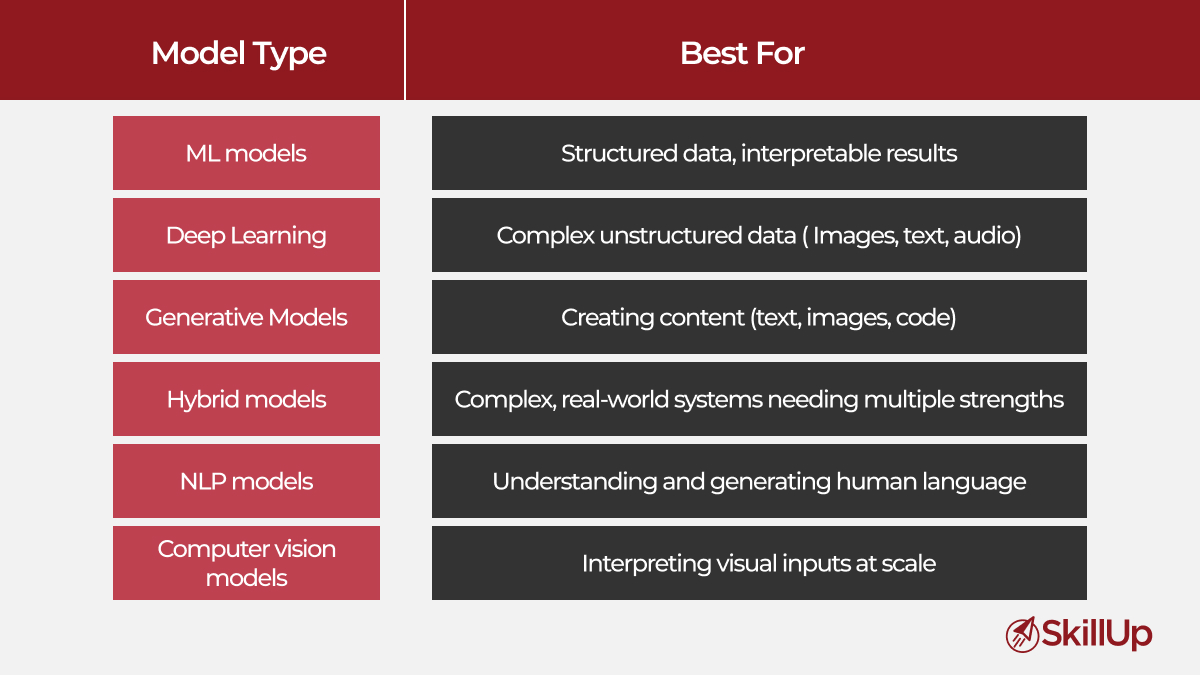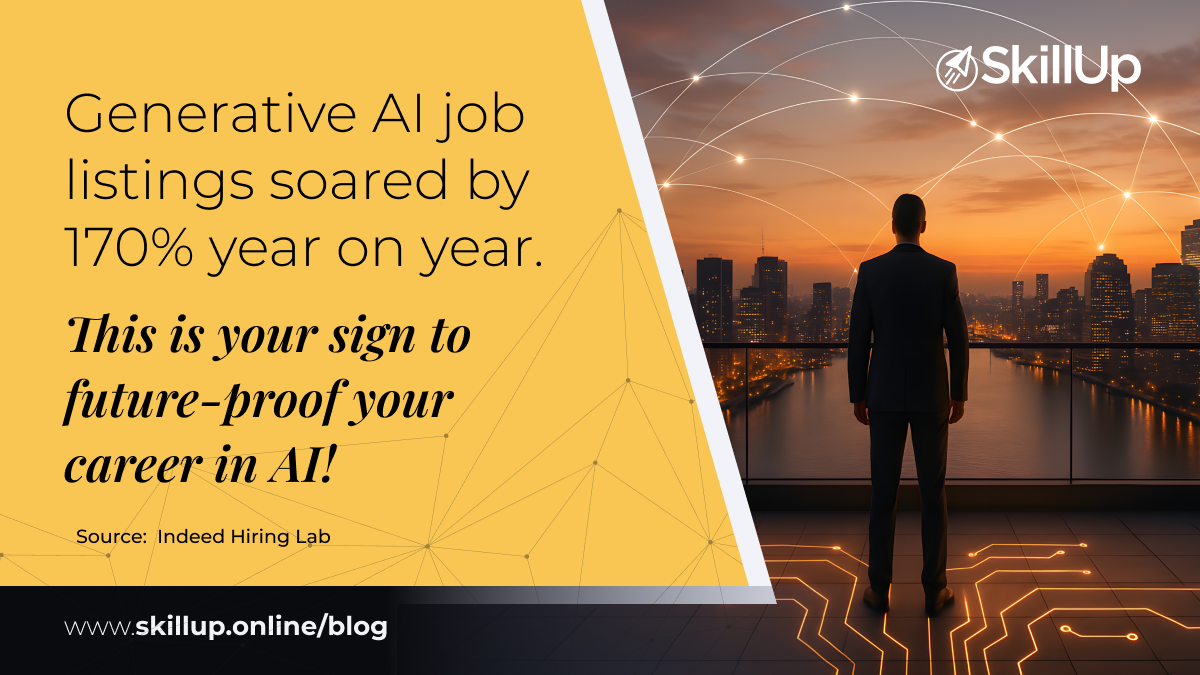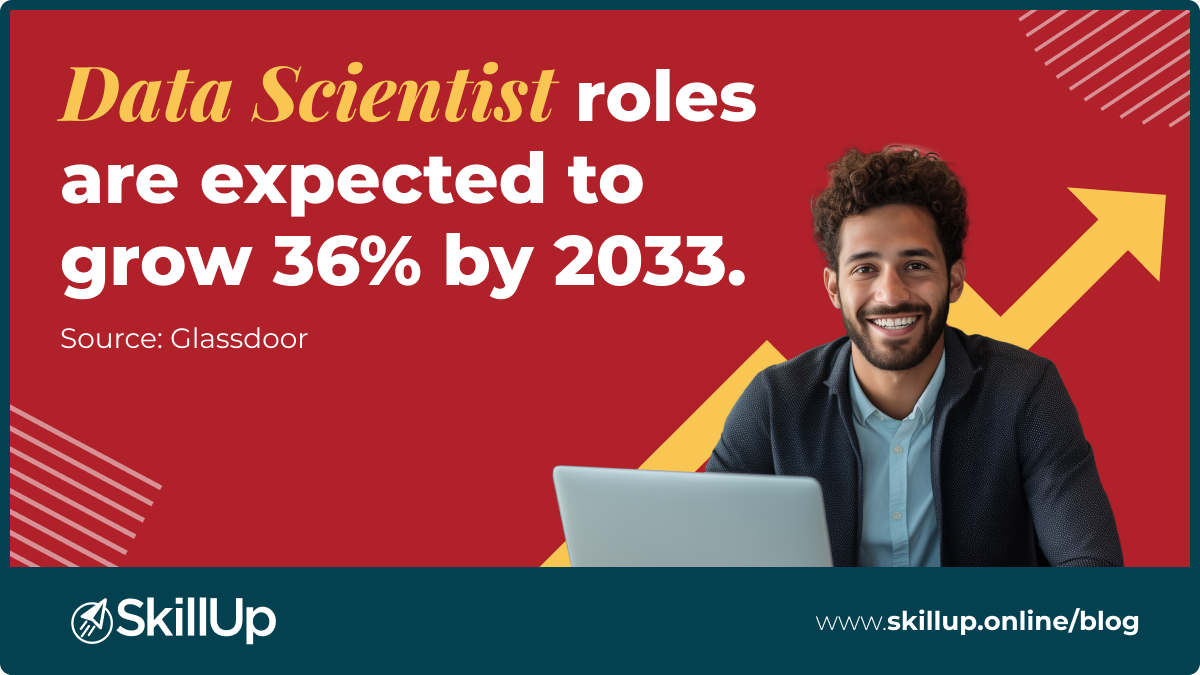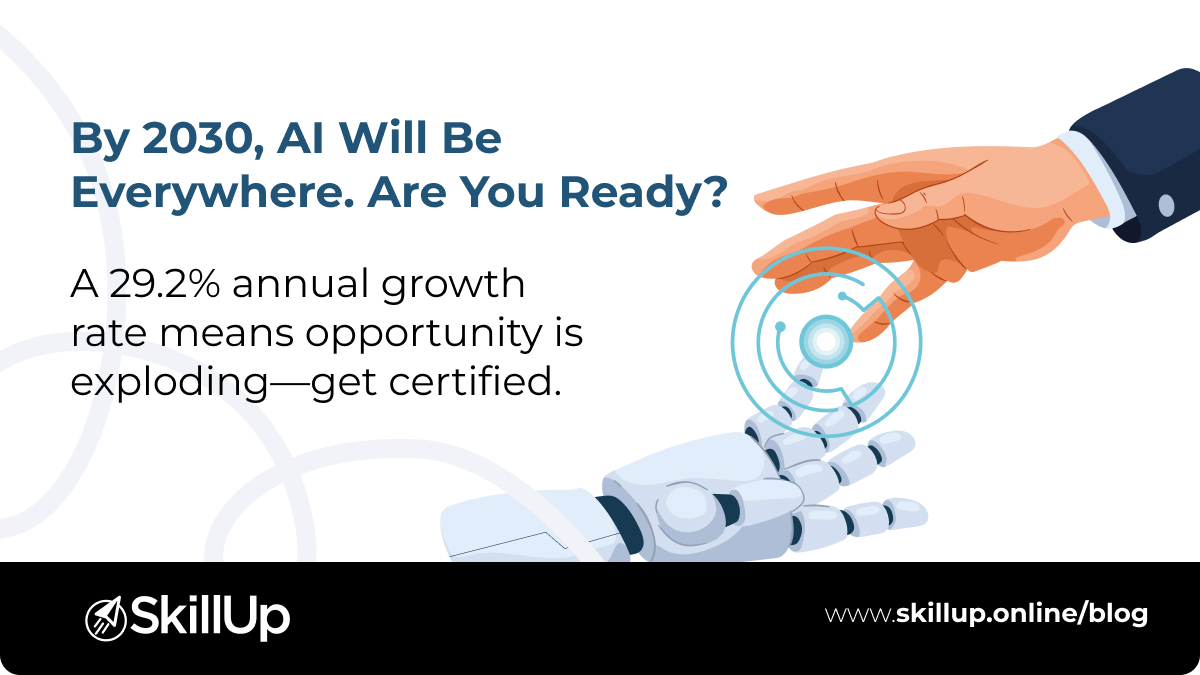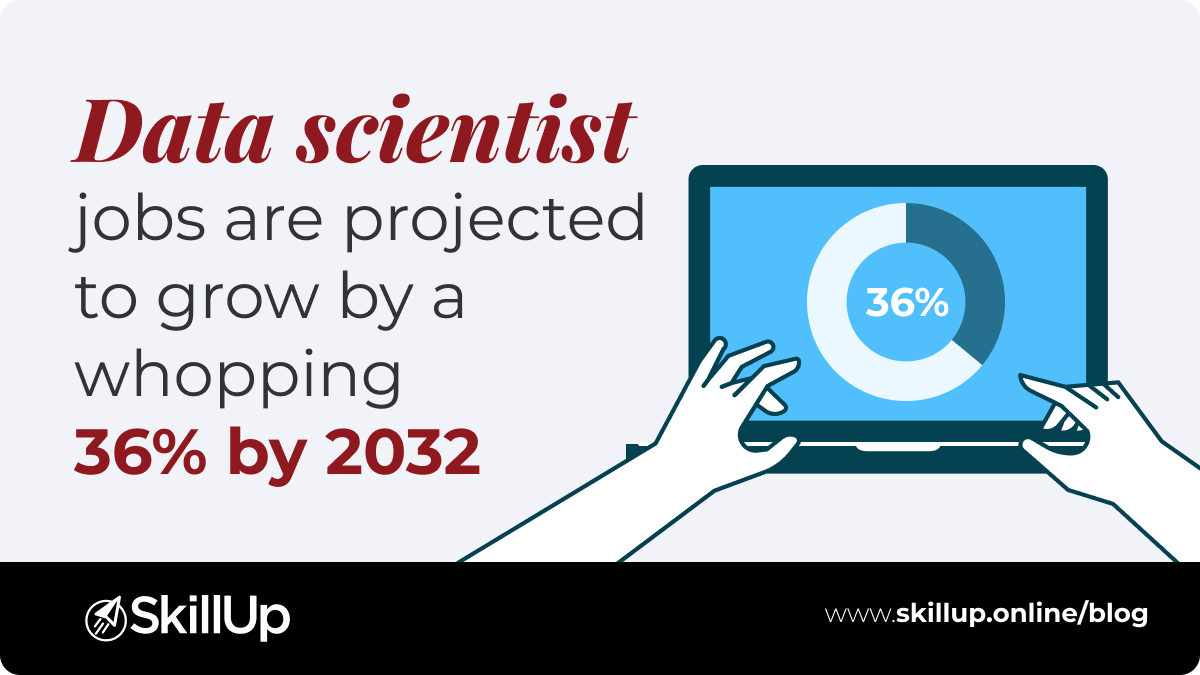AI models are everywhere! From recommending purchases and flagging fraudulent transactions to powering chatbots and assisting in disease detection through medical scans, AI models are driving a wide range of real-world applications. But these capabilities come from different types of models, each designed for specific kinds of problems and data.
Understanding the variety of AI models isn’t just useful for machine learning engineers. Product managers, developers, analysts, and decision-makers all benefit from knowing what kind of model is best suited to which task. It helps you ask the right questions, design smarter solutions, and better collaborate with technical teams.
In this blog, we’ll explore six important types of AI models that form the foundation of most real-world AI systems:
- Machine learning models
- Deep learning models
- Generative models
- Hybrid models
- Natural Language Processing (NLP) models
- Computer vision models
Machine Learning Models: Structured Data’s Best Friend
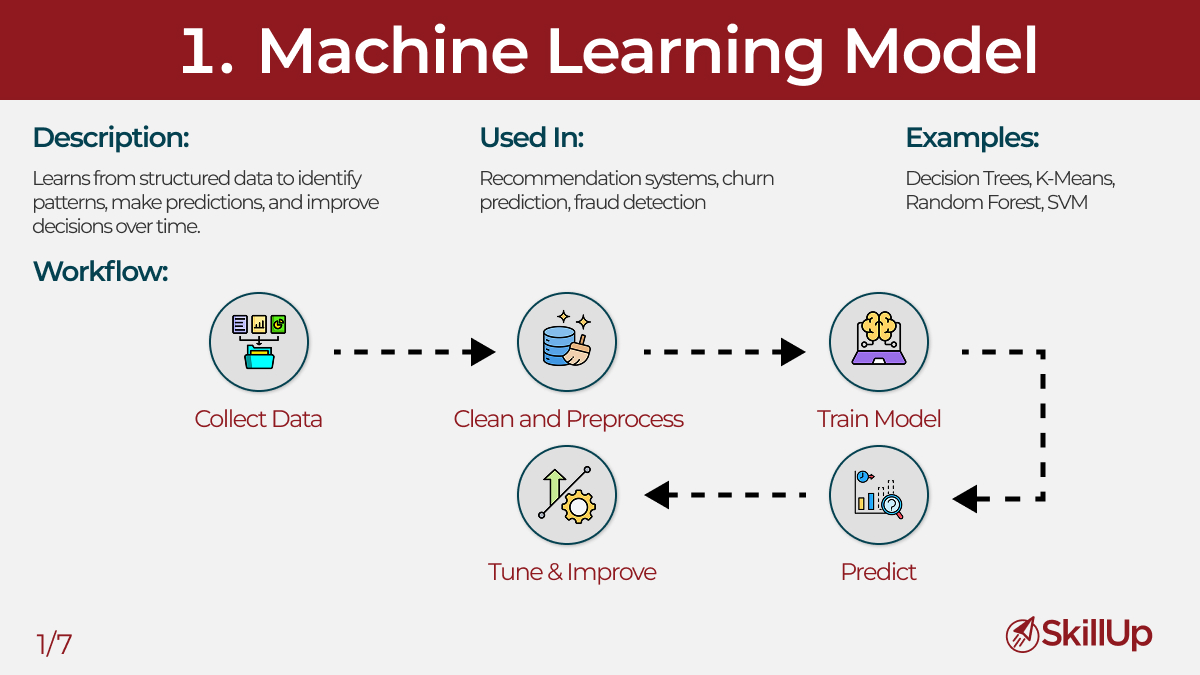
Machine learning (ML) models are some of the most widely used and best understood in the AI space. They learn from labeled or unlabeled data to make decisions or predictions without being explicitly coded with rules.
These models are often applied to structured data (rows and columns in a database) and are prized for their interpretability and relatively low computational demands.
Key algorithms include:
- Linear regression & logistic regression: For predicting continuous or binary outcomes
- Decision trees and Random Forests: Useful for both classification and regression
- Support Vector Machines (SVMs): Effective in high-dimensional spaces
- K-Nearest Neighbors (k-NN): Simple yet powerful for classification tasks
- Ensemble models (e.g., XGBoost, LightGBM): Often win Kaggle competitions
Use cases:
- Predicting customer churn
- Credit scoring and risk modeling
- Inventory demand forecasting
- Email spam detection
- Product recommendation engines
These models are often faster to train, easier to explain, and ideal when you’re working with smaller datasets or want model transparency.
Deep Learning Models: Mastering Complexity at Scale
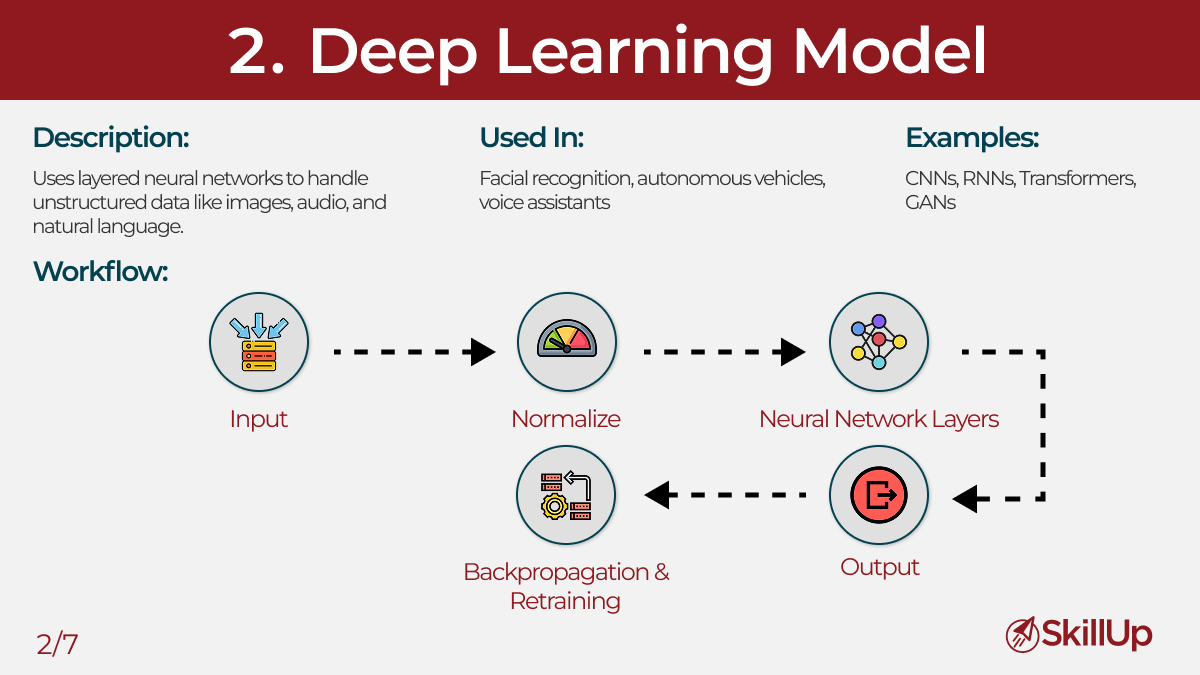
Deep learning models are a type of machine learning based on neural networks with multiple layers. They’ve revolutionized fields like speech recognition, natural language understanding, and computer vision.
Unlike traditional ML models, deep learning excels at finding patterns in unstructured data such as images, text, or audio. However, they typically require large datasets and more processing power to train effectively.
Common types of deep learning models:
- Feedforward Neural Networks (FNNs): Basic building blocks of deep learning
- Convolutional Neural Networks (CNNs): Specialized for image and spatial data
- Recurrent Neural Networks (RNNs): Designed for sequential data (e.g., time series, language)
- Transformers: Modern NLP and multimodal AI systems are built on this architecture
Use cases:
- Image classification and facial recognition
- Autonomous vehicle navigation
- Language translation and speech synthesis
- Financial time-series forecasting
- Industrial defect detection in manufacturing
Deep learning models can achieve incredible accuracy, but at the cost of interpretability and training resources.
Generative Models: Turning Data into Content
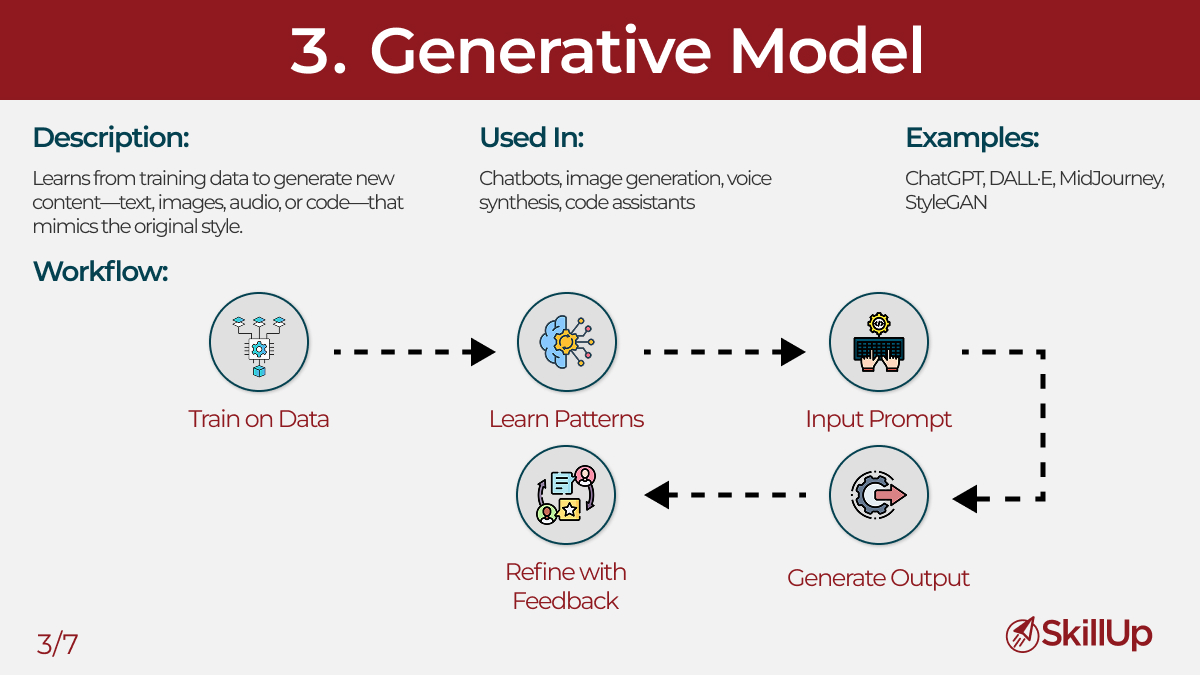
Generative AI models go beyond analysis. They create new data that mimics the training data. Whether it’s producing human-like text, realistic images, or synthetic audio, generative models are redefining what’s possible in creativity, content production, and simulation.
Popular architectures:
- GANs (Generative Adversarial Networks): Learn to generate highly realistic images
- VAEs (Variational Autoencoders): Compress and reconstruct data with generative capabilities
- Diffusion models: Used in high-quality image synthesis (e.g., Midjourney, DALL·E 3)
- Large Language Models (LLMs): Like GPT, Claude, and Gemini, they generate text, code, and more
Use cases:
- AI writing assistants and content generation
- Image and video synthesis
- Music and voice generation
- Product design and prototyping
- Data augmentation and simulation for rare scenarios
With generative models, creativity becomes programmable, but so do ethical concerns like misinformation, deepfakes, and copyright.
Hybrid Models: Building Smarter Systems with Layered Intelligence
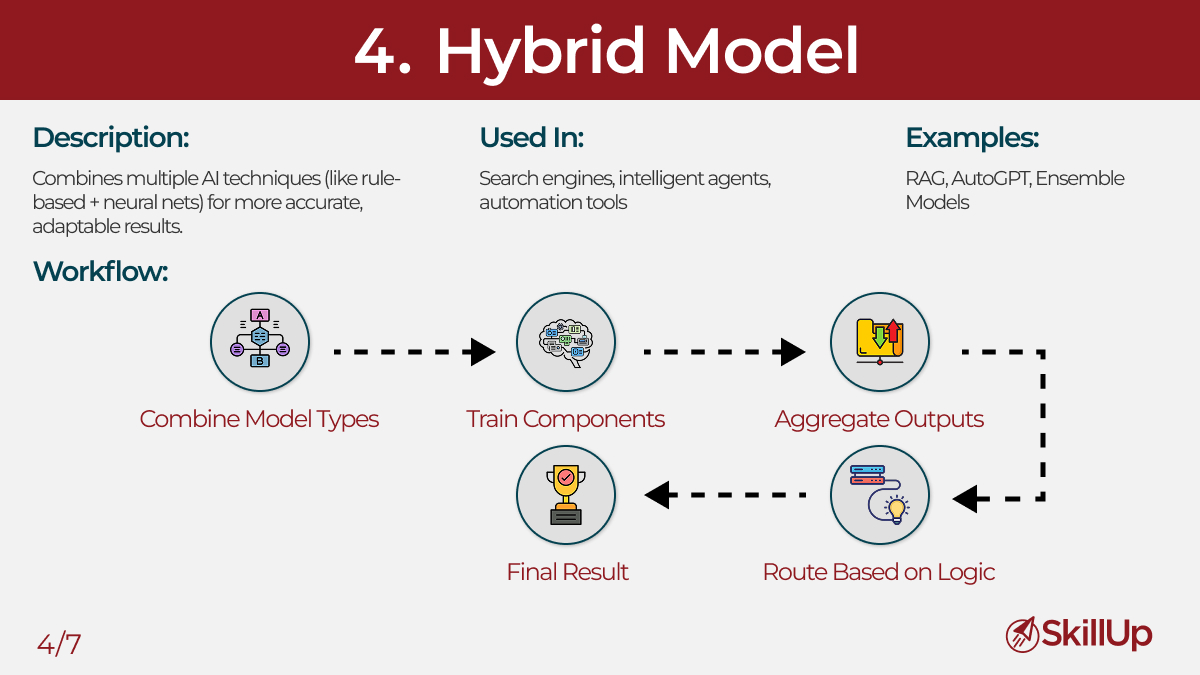
Hybrid AI models blend multiple approaches to overcome the limitations of individual model types. They might combine rule-based logic with machine learning, stack models in pipelines, or use deep learning to extract features before applying a traditional ML model.
Hybrid models are especially useful when one model type doesn’t offer sufficient performance, transparency, or flexibility on its own.
Common approaches:
- Rule-based + ML: For regulated industries like finance or healthcare
- CNN + LSTM: For video analysis or spatio-temporal forecasting
- Vision + language models: Like CLIP or GPT-4V that understand both images and text
- Stacking and ensemble techniques: Combining multiple model predictions to improve results
Use cases:
- Document understanding (images + text)
- Fraud detection (behavioral rules + predictive models)
- Medical diagnosis (image analysis + clinical logic)
- Smart assistants that process speech, images, and user context
Hybrid models are often the most practical in production settings, where interpretability, performance, and business logic must all be balanced.
NLP Models: Teaching Machines to Read, Write, and Understand
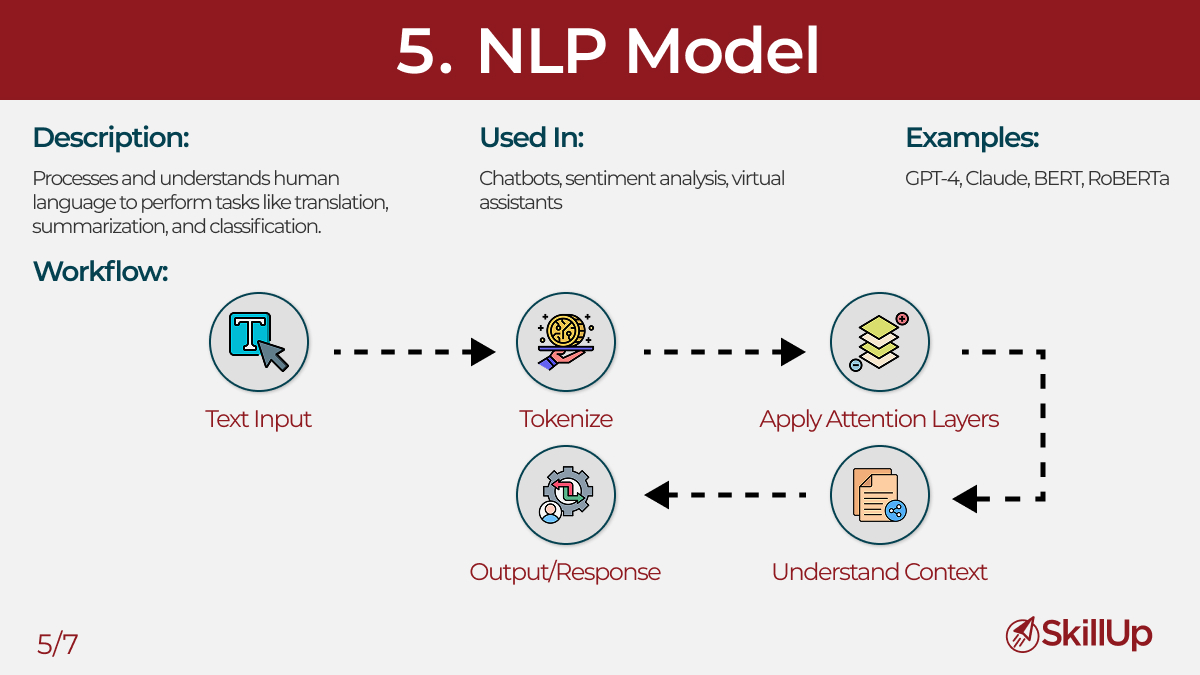
Natural Language Processing (NLP) models help machines make sense of human language, whether written, spoken, or typed. The field has exploded thanks to advancements in deep learning and transformers.
Earlier NLP systems relied on rule-based methods or statistical models. Today, models like BERT, GPT, and T5 are able to understand context, tone, relationships, and even generate full-length articles, summaries, and dialogues.
Key techniques and models:
- Word embeddings: Like Word2Vec or GloVe
- Recurrent models: LSTM, GRU for sequential understanding
- Transformer-based models: Like BERT (bidirectional) and GPT (autoregressive)
- Instruction-tuned LLMs: Fine-tuned for specific conversational or task-based outcomes
Use cases:
- Conversational AI (chatbots, virtual agents)
- Search engine optimization and semantic search
- Customer sentiment analysis
- Document summarization and legal review
- AI-powered coding assistants
NLP models are increasingly multimodal, supporting not just text but code, audio, and even images, expanding what’s possible in content understanding and generation.
Computer Vision Models: Enabling Machines to Interpret Visuals
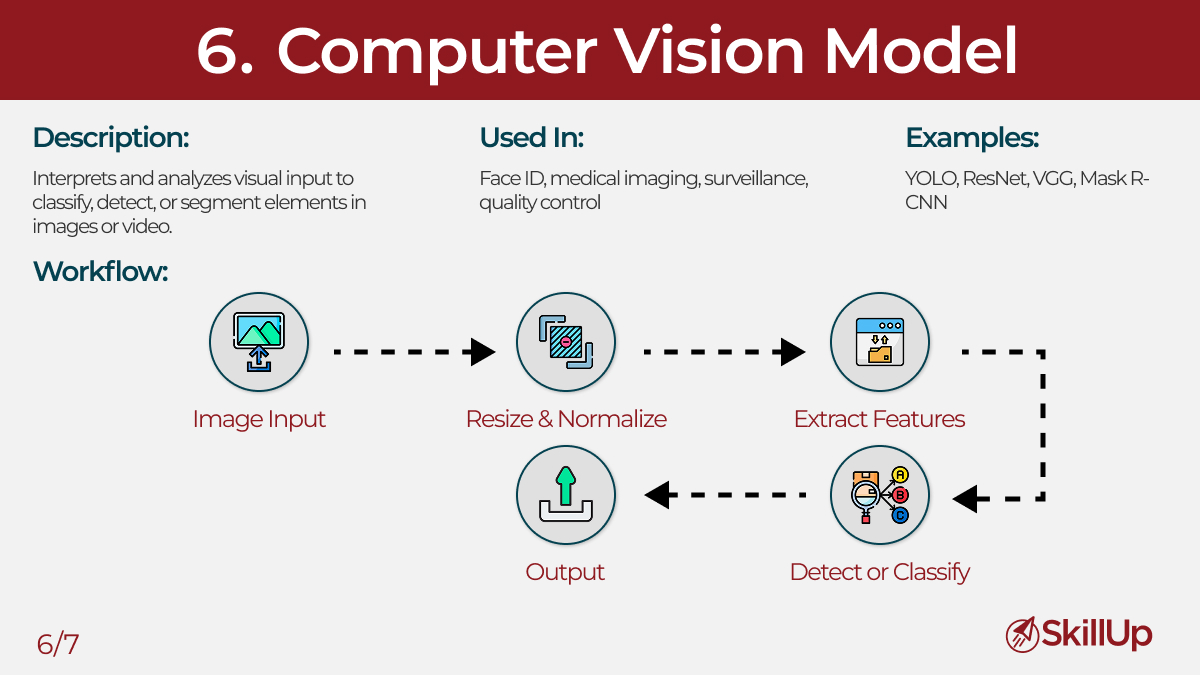
Computer vision is one of the most mature applications of AI. Vision models enable machines to “see” and understand the visual world, from simple object detection to complex spatial reasoning in robotics and autonomous vehicles.
These models are typically based on CNNs but are now evolving with vision transformers (ViTs) and multimodal models that integrate visual and textual inputs.
Common model types:
- CNNs: Foundational for image recognition
- YOLO and SSD: Real-time object detection
- U-Net, Mask R-CNN: For segmentation tasks
- ViT (Vision Transformers): Offering state-of-the-art performance on large datasets
Use cases:
- Quality inspection in manufacturing
- Medical diagnostics using imaging
- Retail analytics (shelf monitoring, footfall tracking)
- Security and surveillance
- Augmented reality and computer graphics
Computer vision models are widely deployed in edge devices and cloud systems alike, making them central to the growing field of AI-powered automation.
Next Steps
Choosing the right model architecture is not about chasing trends. It is about aligning your data, problem statement, and desired outcomes. Whether you are designing intelligent systems, collaborating with AI teams, or making strategic tech decisions, understanding these six types of AI models gives you a solid foundation to build on.
Want to learn how these models are built, trained, and scaled?
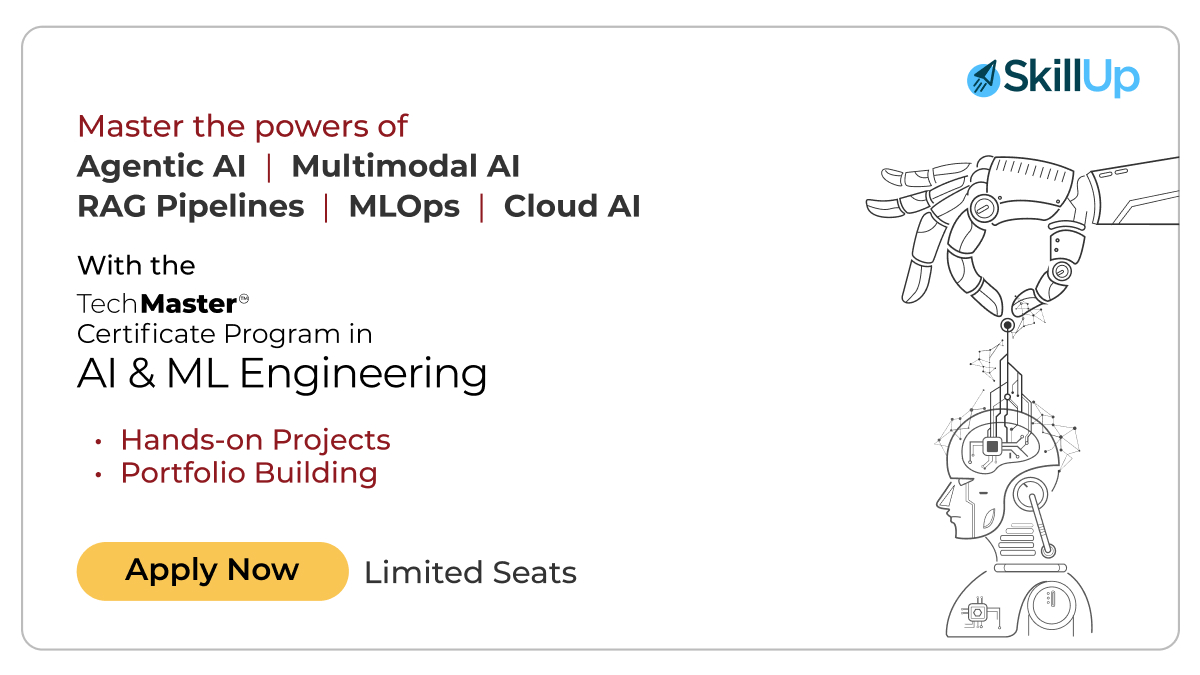
SkillUp’s TechMaster Certificate Program in AI & ML Engineering gives you hands-on experience with the tools, techniques, and workflows used by industry professionals to develop and deploy AI systems.
SkillUp Online
